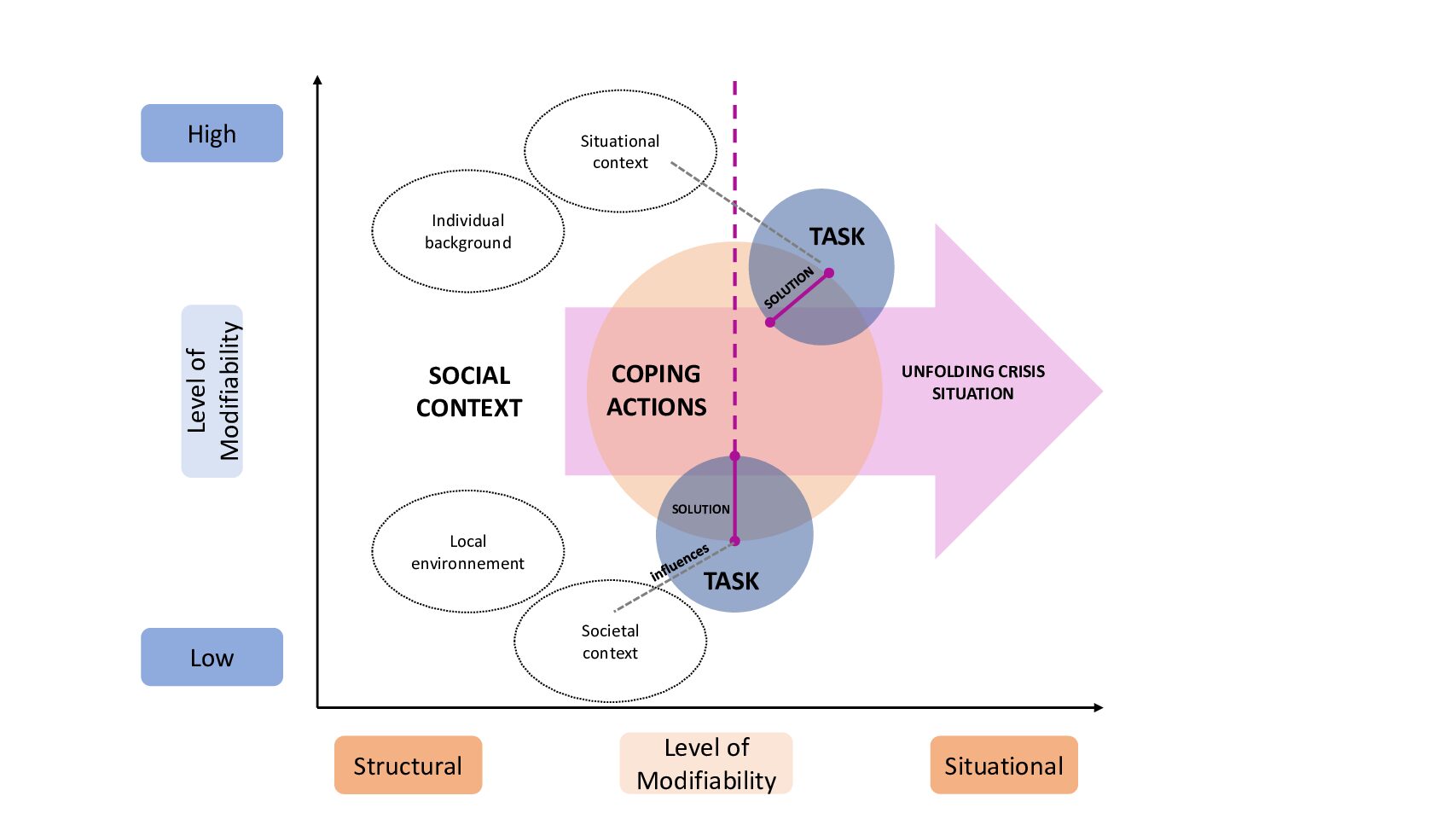Model for assessing and improving societal resilience
ENGAGE developed a model to identify elements of the social context that can be targeted by solutions aimed at enhancing interactions between disaster managers and citizens.
Understanding Social Context in Disasters:
People cope with disasters within a larger social context. Social actors operate as complex systems, acting unpredictably, non-linearly, and in a self-organized manner. In contrast, disaster professionals’ actions are guided by planned norms, a division of labor, and predefined tasks.
Understanding the link between these groups is challenging, especially considering that informal crisis actors occupy specific societal positions and roles and follow social scripts while coping with crises. For example, an engineer repairing a motor or a nurse comforting victims both rely on professional skills and established procedures.
Our model of societal resilience includes professionals who volunteer, victims who cope, and informal actors leveraging their professional skill sets. Therefore, we focus on coping actions, placing them at the center of our model.
Influence of Social Context on Coping Actions:
This model demonstrates how different contextual aspects influence people’s actions during a disaster and how these factors can be enhanced to increase community resilience.
It is crucial to determine which aspects can and should be changed and which cannot. For instance, while trust between disaster managers and citizens can be built by changing information-sharing methods, general trust in authorities cannot be directly targeted during a crisis. Similarly, risk awareness and preparedness can be targeted, but the socio-economic resources they depend on are beyond the scope of the solutions, analyzed in ENGAGE’s catalogue.
Our model features an axis representing the level of modifiability of a contextual aspect, ranging from contextual aspects that cannot be targeted to those that can be influenced by ENGAGE’s catalogued solutions.
Distinguishing Contextual Aspects:
We must also distinguish between what people do in a crisis, how they interact with first responders and authorities, and the elements defined by societal organization. For instance, identifying as a woman, man, being rich, poor, city dweller, or farmer are positions and roles that exist before a crisis. However, people’s actions during a crisis depend on more than these pre-existing positions.
Our model includes a second axis, the level of genericity, indicating whether we focus on situational factors or the broader social context. Together, these axes form a matrix that describes the critical elements for improving societal resilience during a crisis.
Practical Application of the Model:
The context enhancing societal resilience in a crisis relies on local actions within a situational context, where each actor’s individual background drives specific coping actions in a local environment. These elements are influenced by societal structural conditions.
The model allows contextual factors to be repositioned in terms of modifiability and situational versus structural contexts, depending on the specific case. The influence of a contextual factor on the interaction between professional crisis managers and informal actors, and how a solution enhances this interaction, may vary from case to case.
Ultimately, our model shows that ENGAGE’s catalogued solutions bridge the gap between coping actions and specific tasks, aligning with the structured organization of official disaster management.
Additional Resources:


